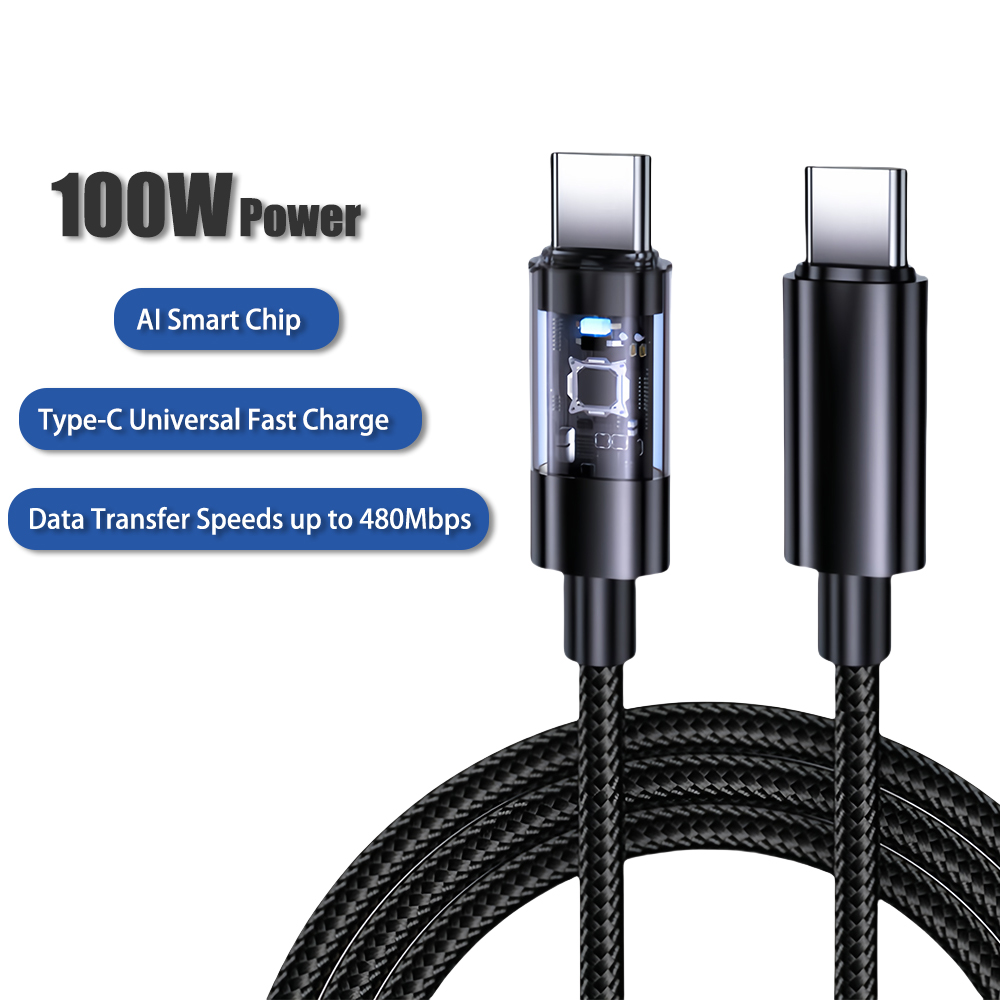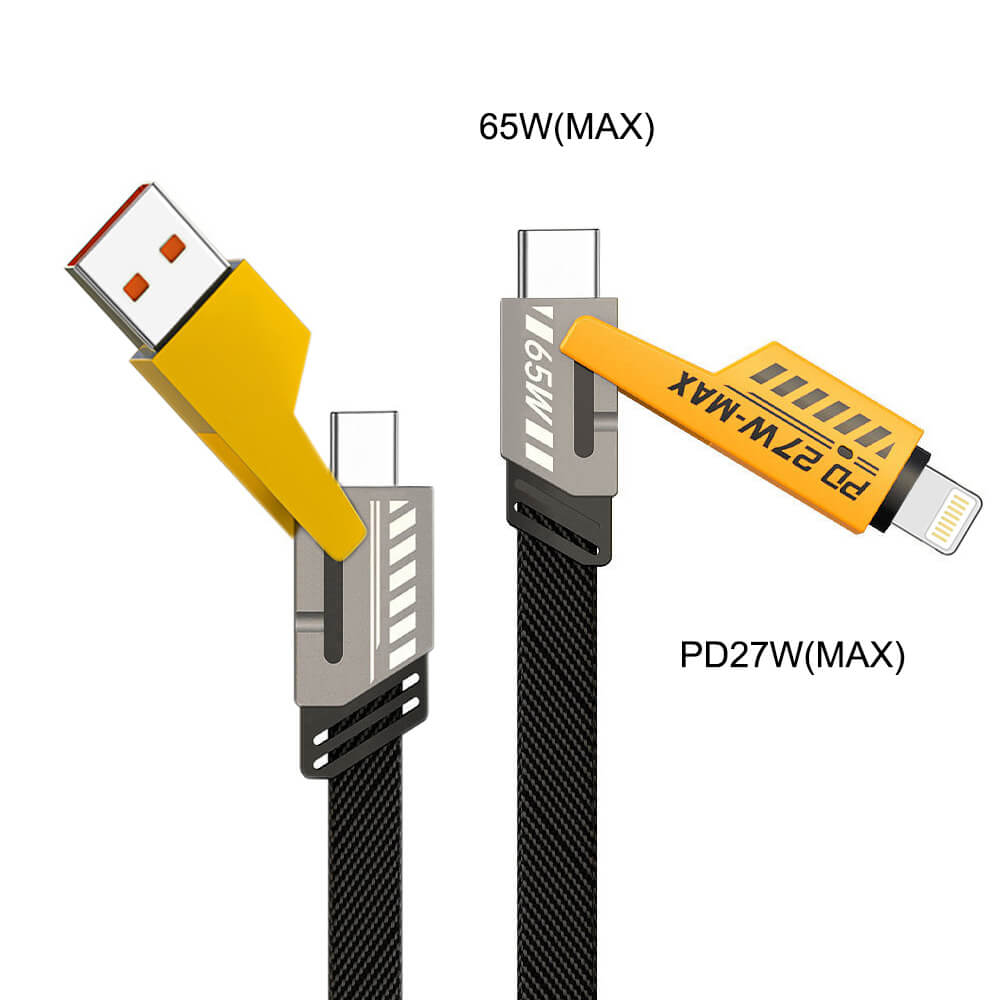Executive Summary
The evolution from QC 2.0 to QC 4.0 represents a dramatic leap in charging technology, reshaping how we power our mobile devices. This in-depth analysis explores the technical specifications, real-world performance, and underlying architectures of these three generations of Qualcomm’s Quick Charge technology. QC 2.0 pioneered the fast-charging revolution with its high-voltage approach, while QC 3.0 introduced intelligent, incremental voltage adjustment for greater efficiency. The advent of QC 4.0 marked a fundamental shift, merging the best of Qualcomm’s innovation with the universal USB Power Delivery (PD) standard, resulting in faster, cooler, and more versatile charging. Understanding these differences is crucial for consumers, manufacturers, and tech enthusiasts looking to maximize charging speed, preserve battery health, and navigate a market saturated with buzzwords. This guide will demystify these standards, providing a clear roadmap from the foundational INOV algorithm in QC 3.0 to the dual-charging prowess of QC 4.0+.
Introduction: The Need for Speed in a Mobile World
In an era where smartphones are central to our personal and professional lives, battery anxiety remains a pervasive concern. The demand for faster, more efficient charging solutions has never been higher. Qualcomm, a leader in mobile semiconductors, has been at the forefront of this race with its Quick Charge (QC) technology. Integrated into its widely-used Snapdragon processors, Quick Charge has become a de facto standard for Android devices.
The journey from QC 2.0 to QC 4.0 is not merely a story of increasing wattage. It is a narrative of increasing intelligence, efficiency, and compatibility. Each generation has addressed the limitations of its predecessor, evolving from a simple high-power solution to a sophisticated power management system that prioritizes both speed and battery longevity. This article will dissect the technical marvels of Qualcomm’s Quick Charge technology, providing a clear, generation-by-generation comparison to help you understand which standard best meets your needs and what the future holds for wireless power.
The Pioneer: QC 2.0 – The High-Voltage Revolution
QC 2.0 was the generation that truly brought “fast charging” into the mainstream lexicon. Before its introduction, most smartphones charged at a standard 5V/2A (10W). QC 2.0 shattered this ceiling by dramatically increasing the voltage.
QC 2.0 Technical Specifications and How It Works
The core innovation of QC 2.0 was its ability to negotiate a higher voltage between the charger and the phone. Instead of being locked at 5V, a QC 2.0-compatible charger could provide power at multiple levels.
Key Technical Specs of QC 2.0:
Supported Profiles: 5V, 9V, and 12V (Class A); 5V, 9V, 12V, and 20V (Class B).
Maximum Current: 3A (1.67A for 12V profile).
Theoretical Maximum Power: 18W (9V/2A or 12V/1.67A) for most smartphones.
Connector: Utilizes Micro-USB and the early USB-C connectors.
The process is simple: the phone and charger communicate via a data signal. When a compatible phone is connected, it signals the charger to switch from the default 5V to a higher voltage, such as 9V. This higher voltage allows more power (Watts = Volts x Amps) to be delivered to the phone without increasing the current, which is a primary cause of heat generation in cables.
Real-World Performance and Limitations
In practice, QC 2.0 could charge a typical smartphone from 0% to 50-60% in about 30 minutes—a remarkable feat at the time. This “rapid charging” phase was most effective when the battery was low.
However, QC 2.0 had significant drawbacks:
Inefficiency and Heat: The high-voltage approach created substantial heat. The voltage conversion from 9V/12V down to the battery’s ~4.2V happens inside the phone, generating waste heat that is detrimental to both the internal components and the battery’s long-term health.
Lack of Granularity: QC 2.0 operated in fixed steps (5V, 9V, 12V). It couldn’t fine-tune the voltage, leading to inefficient power transfer as the battery filled up.
Competing Standards: The success of QC 2.0 led to a flood of proprietary fast-charging standards from other manufacturers (e.g., MediaTek’s Pump Express, Samsung’s Adaptive Fast Charging), creating a fragmented and confusing market.
The Refinement: QC 3.0 – The Era of Intelligent Charging
Building on the foundation of QC 2.0, QC 3.0 was engineered to address its predecessor’s inefficiencies. The key differentiator was no longer raw power, but intelligent power management.
The INOV Algorithm: The Brain Behind the Brawn
The heart of QC 3.0 is Qualcomm’s Intelligent Negotiation for Optimum Voltage (INOV). This proprietary algorithm allows the device to dynamically request the most efficient voltage level in real-time, in increments of 200mV.
Key Technical Specs of QC 3.0:
Voltage Range: A much wider range from 3.6V to 20V (in 200mV steps).
Maximum Current: 3A (for voltages up to 9V) or 2.6A (for higher voltages).
Theoretical Maximum Power: 36W (with specific configurations), though most implementations capped at 18W.
Improved Efficiency: Claimed to be up to 38% more efficient than QC 2.0.
Instead of jumping between 5V, 9V, and 12V, a QC 3.0 device could request, for example, 6.4V or 8.6V, whatever was the most optimal for the battery’s current state. This granular control had two major benefits:
Reduced Heat: By minimizing the voltage conversion differential, QC 3.0 generated significantly less heat than QC 2.0, protecting the battery and enabling safer, sustained charging.
Faster Overall Charging: While the peak charging speed might have been similar to QC 2.0, the ability to maintain an optimal power level for longer periods meant the total charge time from 0% to 100% was noticeably faster.
Backward Compatibility and User Experience
A critical feature of QC 3.0 was its backward compatibility with QC 2.0. A QC 3.0 phone could still fast charge with a QC 2.0 charger, albeit without the INOV benefits. Similarly, a QC 2.0 phone would work with a QC 3.0 charger, defaulting to the older standard’s fixed voltage steps.
For users, QC 3.0 delivered a more consistent and reliable experience. The reduction in heat was palpable, and the technology became ubiquitous in mid-range to high-end smartphones for years, solidifying Qualcomm’s dominance in the fast-charging arena.
The Unification: QC 4.0 and QC 4.0+ – The Power Delivery Alliance
With QC 4.0, Qualcomm didn’t just iterate; it reinvented its strategy. Recognizing the industry’s move towards the universal USB Power Delivery (USB-PD) standard, QC 4.0 was built from the ground up to be compatible with it.
The Dual-Charging Architecture
The most significant technical advancement in QC 4.0 is its Dual Charge++ technology. This is a more advanced version of the multi-cell pumping architecture found in later QC 3.0 implementations.
How It Works: Instead of using a single power management IC (PMIC), the charging current is split between two PMICs within the phone. This effectively halves the current passing through each chip.
The Benefit: This parallel charging method drastically reduces heat buildup and increases charging efficiency. It allows for higher overall power levels while keeping the device cooler—a critical factor for both safety and battery longevity.
Integration with USB Power Delivery (PD)
This is the single most important differentiator for QC 4.0. For the first time, a Qualcomm Quick Charge standard natively supported the universal USB-PD protocol.
What is USB-PD? USB Power Delivery is a universal charging standard developed by the USB Implementers Forum (USB-IF). It is designed to be a single, cross-compatible standard for everything from smartphones to laptops.
Why It Matters: By incorporating USB-PD, QC 4.0 devices can charge rapidly with a wider range of chargers, including those for modern laptops like MacBooks and Dell XPS models. This moves the industry away from proprietary standards and towards a unified ecosystem.
QC 4.0+ builds on this foundation with further enhancements, most notably a focus on Battery Saver technology, which is designed to maintain battery health over time, and even more granular voltage control (in 20mV steps instead of 200mV).
Key Technical Specs of QC 4.0/4.0+:
Compatibility: Native support for USB Power Delivery (USB-PD).
Architecture: Dual Charge++ technology.
Voltage & Current: Supports a wide range with a focus on the optimal USB-PD profile of 5V/3A, 9V/3A, 11V/3A, and 12V/2.6A for up to 27W.
INOV 3.0: The latest version of the algorithm with finer 20mV steps.
Safety Features: Enhanced thermal management and voltage/current monitoring.
In practice, QC 4.0 is not just about being faster than QC 3.0; it’s about being smarter, cooler, and more universal. Qualcomm claimed QC 4.0+ could provide up to 5°C cooler operation, 20% faster charging, and 30% higher efficiency compared to QC 3.0.
Head-to-Head Comparison Table
| Feature | QC 2.0 | QC 3.0 | QC 4.0 / 4.0+ |
|---|---|---|---|
| Maximum Power | 18W (typical) | 18W (typical), 36W (max) | 27W+ (with USB-PD) |
| Voltage Negotiation | Fixed Steps (5V, 9V, 12V) | Dynamic (3.6V-20V in 200mV steps) | Dynamic with INOV 3.0 (20mV steps in 4.0+) |
| Key Innovation | High-Voltage Charging | INOV Algorithm | Dual-Charging + USB-PD Compatibility |
| Primary Connector | Micro-USB / USB-C | USB-C | USB-C |
| Heat Generation | High | Moderate | Low |
| Efficiency | Low | Moderate | High |
| Backward Compatible | – | With QC 2.0 | With QC 2.0/3.0 & USB-PD |
| Battery Health Focus | Low | Moderate | High (Battery Saver in 4.0+) |
| Industry Impact | Popularized Fast Charging | Refined & Standardized it | Moved towards Universal Standard |
Which One Should You Choose? A Practical Guide
You have a device with QC 2.0 or QC 3.0: Your charging ecosystem is mature and accessories are widely available. While it lacks the universality of QC 4.0, it still provides a solid fast-charging experience. A good quality QC 3.0 wall charger or a versatile GaN charger that supports QC 3.0 is a great investment.
You are buying a new device (or charger) today: You should prioritize QC 4.0+ or a charger that supports both USB-PD and QC. The future is universal. A charger that supports USB-PD and QC 4.0 will not only fast-charge your current Android phone but also be compatible with iPhones (which use USB-PD), modern laptops, tablets, and other gadgets. This reduces the number of chargers you need to carry and ensures the best possible investment for the evolving tech landscape.
The Future: Beyond QC 4.0 and the Road to QC 5
Qualcomm has since released QC 5, which pushes power delivery to 100W+ and can charge a phone from 0% to 50% in just 5 minutes. However, the principles established in QC 4.0 remain foundational: extreme power is achieved through advanced dual-charge architectures, deep integration with USB-PD PPS (Programmable Power Supply), and an uncompromising focus on thermal management.
The legacy of QC 4.0 is its role as a crucial bridge, successfully merging Qualcomm’s proprietary leadership with the industry’s need for a universal standard. It proved that a company could champion its own technology while embracing an open ecosystem, a lesson that continues to benefit consumers today.
Conclusion
The evolution from QC 2.0 to QC 4.0 is a clear trajectory from raw power to intelligent, efficient, and universal charging. QC 2.0 was the revolutionary pioneer that made fast charging a must-have feature. QC 3.0 refined this with intelligent algorithms, making charging cooler and more efficient. Finally, QC 4.0 and 4.0+ represent the maturation of the technology, embracing universal standards like USB Power Delivery while introducing advanced dual-charging architectures for unparalleled speed and safety.
For the modern consumer, understanding this progression is key to making informed purchasing decisions. While QC 2.0 and 3.0 devices still serve millions well, the future lies in the universal compatibility and superior engineering of QC 4.0 and beyond. When seeking out your next charger or device, looking for the QC 4.0 and USB-PD logos is your best guarantee of a fast, cool, and future-proof charging experience.






